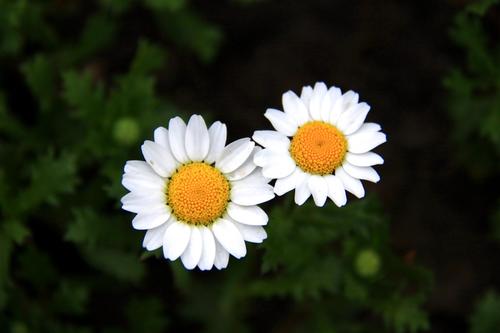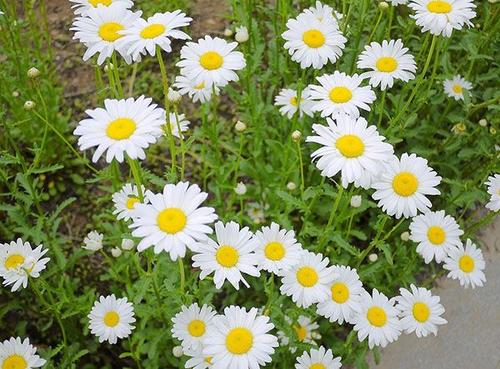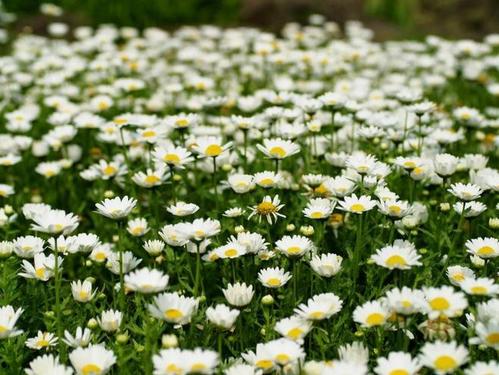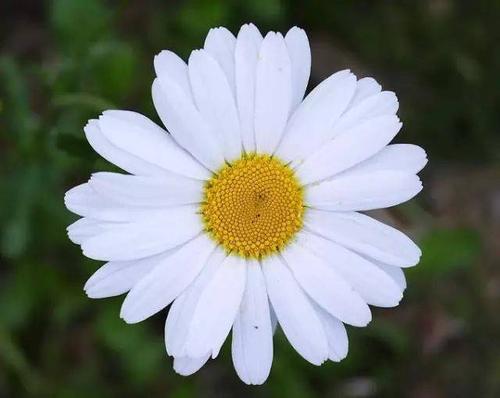Creeping daisy (Leucanthemum paludosumm) profile
Written by Maggie
Oct 28 2021

Creeping Daisy, also known as Leucanthemum paludosumm, is a biennial herbaceous flower. Creeping daisy likes a warm, humid and sunny environment. Creeping daisy is harder to cold and half shade. Creeping daisy is suitable for growing in loose and fertile loam soil with good drainage. Creeping Daisy is short, sturdy, abundant, and peeping in sheets. Creeping Daisy will bloom early and long.Inflorescence terminal, achenes after flowers, maturation in spring.
Creeping daisy picture

Creeping daisy characteristics
Creeping Daisy is a biennial herb in the composite family, 15 to 25 centimeters in height. creeping daisy has alternate leaves and one to two pinnates. Cephalate terminal, discoid, the edge of the liguate flowers silver white, the central tubular flowers golden color, bright, flower diameter 3 to 4 cm. Plant height to 15 centimeters can be flowering, flowering period from late winter to early summer,. After flowering achenes, mature in late May.
Creeping Daisy is short, sturdy, diversified, and peeping early and long. Creeping Daisy is ideal for potting, combination potting, or early spring flower bed landscaping. Plant height 10 cm.Leaves pinnately lobed. The flower top is born, the flower diameter is about 2 ~ 3 cm, the peripheral tongue petal is pure white, the center tube flower is bright yellow, grows in clusters, but is elegant and free from vulgarity.
Creeping Daisy's ecological habits
Creeping Daisy likes warm, humid, sunny, and cool conditions. Creeping Daisy will not bloom properly due to insufficient sunlight. Creeping daisy jas cold resistance, high temperature resistance, half shade resistance. Creeping daisy is suitable for growing in loose and fertile loam soil with good drainage. Creeping Daisy is short, sturdy, abundant, and peeping in sheets. Creeping Daisy will bloom early and long. Inflorescence is terminal, achenes after flowers, maturation in spring.
Creeping Daisy is suitable for growth at 15℃ to 25℃. Creeping daisy can be planted above -5℃ for safe wintering. Creeping daisy can be planted above -5℃ for long periods of low temperature, causing leaves to freeze and turn dry and yellow. Creeping Daisy should avoid high temperature and humidity. Creeping Daisy should peep in on high temperatures in the summer and bloom more quickly as temperatures rise. Creeping Daisy should be placed in a cool, ventilated environment to extend flowering time. Strong adaptability, do not choose the soil, but suitable for planting in loose, fertile, moist loam or sandy loam growth best. Cultivate soil at ordinary times to keep wet, avoid by all means long-term too wet, cause root rot, affect growth and development. During the growth period, nitrogen, phosphorus, potassium compound fertilizer was applied every half a month, and the ratio was 2∶1∶2. Creeping Daisy will flower excessively long and need phosphorus and potassium fertilizer to peep in. After the flower, if no seeds, can be cut at any time to residual flowers, promote lateral branches to produce new buds, increase the number of flowering, and prolong the flowering period.
How to grow and care for creeping daisy
1. The soil
Creeping Daisy is not strictly required to breed in the soil. Creeping Daisy will usually work just fine on the side of a flower bed or tree. Home rearing is best done in a fertile, loose loam or sandy loam that provides better air permeability.
2. Water and fertilizer care
Creeping Daisy maintenance is critical because Creeping daisy is a longer flower that can bloom from midwinter through early summer, with a peak bloom in spring, when it will require more nutrients. Flowering 20~30 days top dressing once, growing every half a month top dressing once, watering not too frequently, 7~10 days watering once, keep the soil moist can be.
3. The temperature
Creeping Daisy is hardy, but not resistant to high temperatures. The optimum temperature for growth is 15 to 25℃. Just below -5℃ is safe for wetting; above 30℃, the plant will undergrow. Therefore, in winter, the temperature should be controlled above 0℃. If the environment is lower than -5℃ for a long time, the leaves will be frostbitten, dry and yellow, but with the rise of temperature, they will gradually recover and not affect the growth. Summer temperature is born high, can accelerate the wither of a flower, want to put it in a cool and ventilated place, and can extend the flowering period.
4. Light
Most flowering plants need sunlight to protect them, and Creeping Daisy is no exception. Creeping Daisy likes sunny but cool conditions because insufficient sunlight will cause flowers to fail to develop or to fall off too quickly. Creeping Daisy can be placed on the south facing window sill for home care to provide sunlight and ventilation.

Creeping daisy propagation
Creeping Daisy propagates with sowing, usually in autumn, at a suitable temperature for germination of 15 to 20 degrees Celsius. When sowing, mix the seeds with a small amount of fine sand or culture soil and spread them in the seedbed or seedling tray. The thickness of the soil should not be seen. Keep wet and germinate for 5 to 8 days. After the seedling is grown, slightly apply topdressing to promote the growth of the seedlings. After 4 to 5 true leaves are grown, they are transferred to the seedbed or the nutrition bowl for cultivation. Creeping Daisy is hardy, but winter seedlings are best placed in plastic greenhouses or in a cold room to allow them to grow, water and fertilized them, remove buds, and increase crown diameter. Creeping Daisy will be moved outside or in the flower bed early the next spring to increase the viewing effect.
Creeping daisy disease and pests control
Pest prevention: common diseases and insect pests have leaf spot disease, stem rot disease, can use 65% of the wet zinc spray powder. Pests and diseases include stink bugs and leaf miner flies, which can be sprayed 1500 times with 25% SiV WP.
Creeping daisy's distribution area
Creeping Daisy is native to: North Africa, Spain.
Creeping daisy's garden use
Creeping Daisy is short and sturdy, abundant in flowers, and peeping early and long. Creeping Daisy is elegant and peeping in clusters, with white or yellow petals and dense yellow centers.
Garden use: indoor potted, flower bed suitable for potted, combined potted ornamental or early spring flower bed beautification.It can also be grown as ground cover.

Read Next:
Top 10 Most Beautiful Roses in the World
Top 10 Most Beautiful Flowers in the World
26 Best Autumn Flowers to Plant for Fall Color in Garden
Latest Updated
- Benefits of Bugleweed - 7 Science-backed Health Benefits
- Bugleweed Dangers & Side Effects - Is It Poisonous?
- How to Plant Evergreen Trees - What You Should Know
- When to Plant Evergreens - Grow Guide for Evergreen Trees
- 12 Wonderful Evergreen Shrubs for Your Garden
- 12 Popular Evergreen Plants with Pictures for Beginners
- When And How To Prune A Lilac Bush Like a Pro
- How to Grow & Care for Lilac Vine (Hardenbergia Violacea)
- Japanese Lilac Tree (Syringa Reticulata) Care & Propagation Guide
- Shumard Oak Pros and Cons - What to Know
Popular Articles
- Winter maintenance of Antirrhinum Majus
- How to Grow Terminalia Mantaly Tree
- How to Grow and Care for Crossostephium Chinense
- How to grow Antirrhinum Majus in spring
- Peristeria Elata (Dove Orchid) Profile: Info & Care Guide
- Underwatered Snake Plant (Sansevieria Trifasciata) - Signs And How To Fix
- How to Care for Brazilian Jasmine Plant (Mandevilla Sanderi)
- How to Grow & Care for Graptopetalum Purple Delight in Summer
- Rosa Chinensis (China Rose): Plant Growing & Care Tips
- How to Care for Baby Sun Rose (Aptenia Cordifolia)